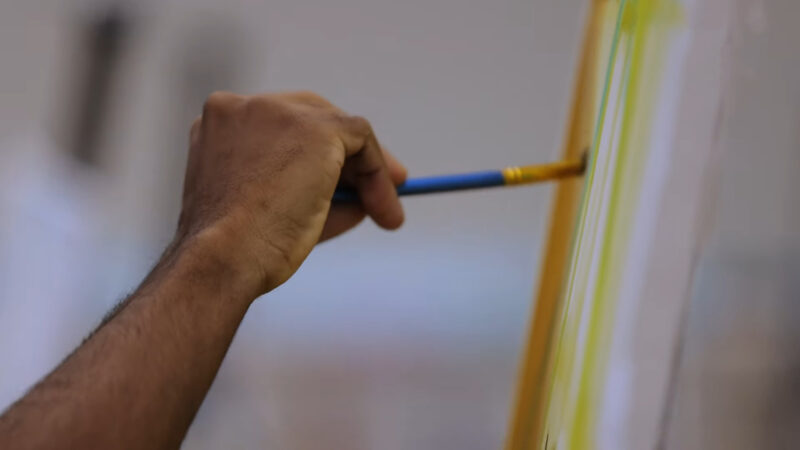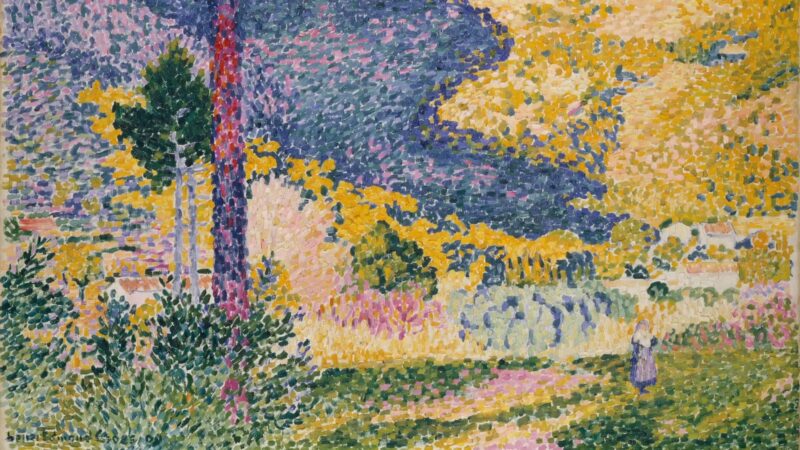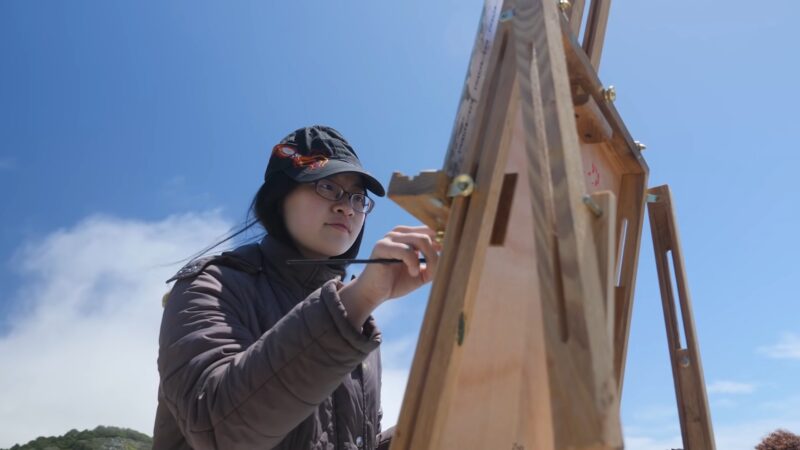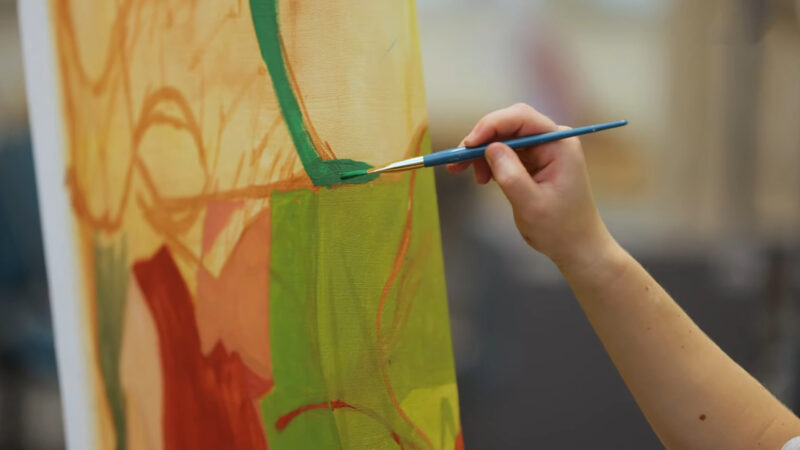Fine arts classes offer a unique blend of creativity, culture, and expression. They provide a platform for students to explore various forms of art, including painting, sculpture, music, theater, and dance.
Besides learning techniques; they foster creativity, enhance critical thinking, and appreciate the richness of human culture. In this article, we’ll explore the importance of these classes, what they entail, and how they benefit students of all ages.
Key Takeaways
- Fine arts classes encompass a broad spectrum of creative disciplines such as painting, sculpture, music, theater, and dance, each providing a unique creative experience and learning opportunity.
- They play a crucial role in enhancing creativity, critical thinking, and cultural awareness. These classes also contribute positively to students’ academic performance and communication skills.
- The curriculum in these classes includes learning about the history of art, understanding the contributions of great artists, and the cultural significance of various art forms, providing students with a deep appreciation of the arts in a broader societal context.
- The skills acquired in these classes are highly valued across different professions and contribute to overall personal development
What Can You Expect?

In these classes, students learn about the great artists, movements that shaped art history, and the cultural and social relevance of different art forms. Whether it’s understanding the Renaissance period in a painting class or exploring contemporary themes in theater, fine arts classes provide a holistic education in the arts.
Different Types of Classes
| Type of Class | Description |
|---|---|
| Painting and Drawing | Covers techniques like oil painting, watercolors, acrylics, and charcoal. Teaches color theory, composition, and styles. |
| Sculpture | Introduces students to three-dimensional art forms using clay, metal, wood, or stone. Focuses on form, texture, and structure. |
| Music | Includes learning instruments, voice training, music theory, and studying musical genres and history. |
| Theater | Involves acting, scriptwriting, and stage production elements. Explores the history of theater and its societal role. |
| Dance | Covers various styles such as ballet and contemporary dance. Focuses on movement, choreography, and dance history. |
Curriculum and Teaching Methods
The curriculum in fine arts classes is diverse and dynamic, effectively blending various learning approaches. It typically includes practical sessions, where students might engage in live painting workshops, sculpture modeling, or interactive music composition sessions.
Alongside these hands-on activities, theoretical studies are a crucial component, often involving in-depth analysis of art history, study of famous works, and understanding the cultural impact of different art forms. These classes frequently incorporate field trips to galleries, museums, or theaters, providing students with firsthand experience of professional art in various settings.
For instance, a visit to a local museum might include a guided tour of an exhibit, offering insights into the techniques and histories of the displayed art.
Teaching Methods
Teaching methods in these classes are distinctly hands-on and interactive. Students are encouraged not just to learn but to actively participate.
They might engage in group critiques, where they present their work and receive constructive feedback from both peers and instructors, fostering a collaborative and supportive learning environment. In drama classes, for instance, students might participate in improvisation exercises that enhance their creative thinking and performance skills.
Music students could collaborate to form ensembles, learning to perform in harmony and balance. These methods ensure that students are not passive recipients of knowledge, but active creators and analyzers of art, preparing them for a more profound engagement with the arts, both within and outside the classroom setting.
What Are the Benefits of These Classes?

They Enhance Creativity
Fine arts education stimulates imagination and encourages innovative thinking. It enables students to view the world from multiple perspectives, fostering open-mindedness and creative problem-solving skills.
Engaging in artistic activities helps in developing a sense of aesthetic awareness, allowing students to express their thoughts and emotions uniquely. Additionally, creativity gained through arts education often spills over into other academic and life endeavors, enhancing overall intellectual agility.
Fine Arts Improve Academic Performance
Studies show that involvement in the arts can lead to higher academic achievement. Students engaged in arts tend to display better memory and concentration skills, which are critical in all areas of education.
The discipline and focus required in artistic practices translate into improved study habits. Arts integration in education can make learning more engaging and enjoyable, leading to a positive attitude toward school and learning in general.
Cultural Awareness
Through studying various art forms, students gain an appreciation of different cultures and historical periods. This exposure broadens their understanding and empathy towards people from diverse backgrounds.
It helps in nurturing global citizens who are culturally informed and respectful. Moreover, fine arts often present historical and cultural contexts that encourage students to understand and value the richness and diversity of human history and traditions.
Develop Critical Thinking Skills
Analyzing and interpreting art helps develop critical and analytical thinking. Students learn to observe intricacies, understand nuanced meanings, and evaluate different viewpoints, which are essential skills in any academic or professional field.
This analytical approach fosters a questioning mindset, vital for scientific inquiry and problem-solving in real-world situations. Additionally, critical thinking nurtured through the arts encourages students to challenge assumptions and think outside the box.
Boost Confidence and Communication Skills
Performing arts, in particular, help in building self-confidence and improving communication skills. Students learn to express themselves effectively, both verbally and non-verbally, enhancing their ability to convey ideas and emotions.
Participation in group performances and collaborative projects also builds teamwork skills and empathy. This aspect of arts education is crucial for personal development and is highly valued in various professional environments, as confident communication is key to success in nearly every field.
Making These Classes Accessible

One of the challenges in fine arts education is making it accessible to everyone. Schools and communities are finding ways to integrate fine arts into the curriculum and offer classes outside of school hours.
This approach helps in reaching students who might not otherwise have the opportunity to participate in these classes due to scheduling conflicts or other commitments. Furthermore, there’s an increasing focus on providing scholarships and financial assistance for students who might not be able to afford the costs associated with fine arts education, such as materials and equipment.
Online classes have also become popular, providing access to quality arts education regardless of location. These virtual platforms often offer a diverse range of courses, from beginner to advanced levels, catering to a wide audience.
They also create a platform for students to connect with renowned artists and educators from around the world, further enriching their learning experience. Additionally, community centers and local art groups often organize free workshops and events, making fine arts more accessible to people of all ages and backgrounds in the community.
FAQs
Can fine arts classes improve mental health and well-being?
Yes, fine arts classes can significantly improve mental health and well-being. Engaging in artistic activities like painting, playing music, or dancing has been shown to reduce stress, alleviate anxiety, and enhance mood. These activities stimulate the brain in unique ways, promoting relaxation and emotional expression.
Are there opportunities for students to showcase their work in fine arts classes?
Absolutely. Many fine arts programs offer opportunities for students to showcase their work through exhibitions, recitals, or performances. These events not only provide a platform for displaying talent but also help in building confidence and public speaking skills. Schools and communities often organize art shows or local theater productions for this purpose.
How do fine arts classes cater to students with different learning styles?
Fine arts classes are uniquely positioned to cater to various learning styles, such as visual, auditory, and kinesthetic learning. For example, visual learners benefit from drawing and painting, auditory learners from music classes, and kinesthetic learners from dance or sculpture-making. Instructors often use a mix of teaching methods to engage all students effectively.
Is previous experience in art required to enroll in fine arts classes?
No, previous experience is not typically required to enroll in fine arts classes. These classes are usually designed to accommodate beginners as well as more advanced students. Instructors tailor their teaching to suit the individual skill levels and interests of their students.
How do fine arts classes contribute to cultural diversity and understanding?
Fine arts classes expose students to a wide range of cultural contexts and histories, promoting cultural diversity and understanding. Through studying different art forms from around the world, students gain insights into various cultural traditions and perspectives, fostering a greater appreciation and respect for diversity.
Can students pursue careers based on skills learned in fine arts classes?
Yes, skills learned in fine arts classes can lead to various career paths. Students may become professional artists, musicians, actors, and art educators, or enter creative fields like graphic design, animation, or art therapy. The skills developed in these classes, such as creativity, critical thinking, and problem-solving, are highly valued in many professions.
Summary
In conclusion, fine arts classes are educational courses that focus on various artistic disciplines such as painting, sculpture, music, theater, and dance. These classes teach not only the technical skills needed to create art but also encourage creativity, critical thinking, and cultural appreciation.
They are designed for students of all ages and skill levels, providing valuable opportunities for personal and professional development.

